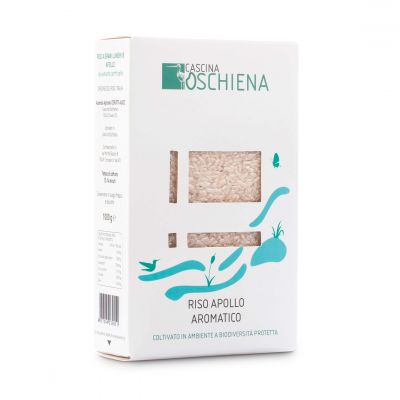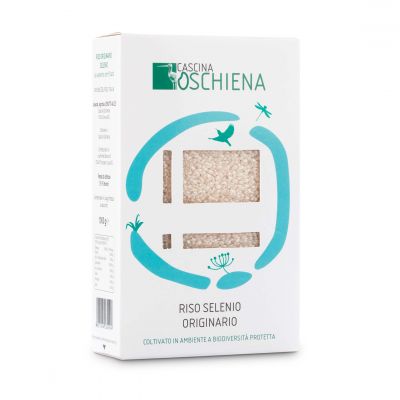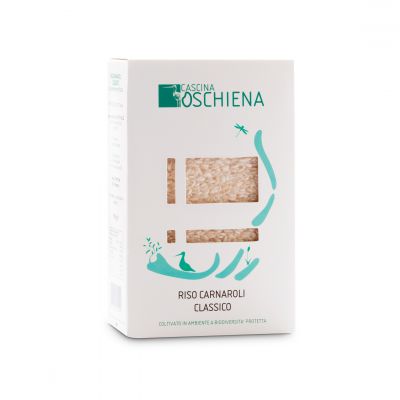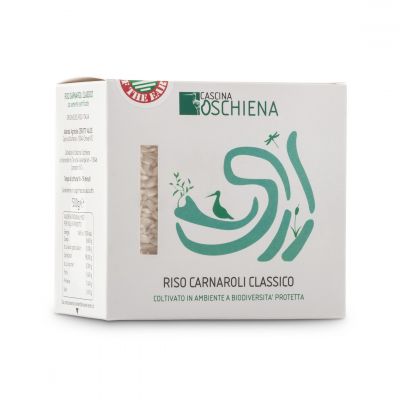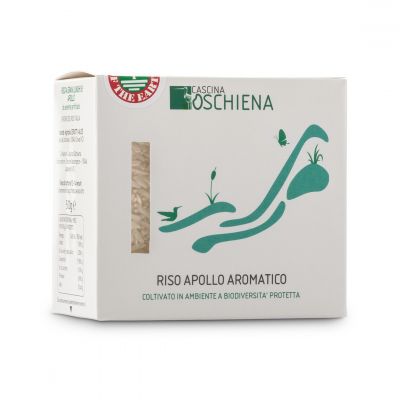The visit to the Natural Oasis of the Godwit becomes the chance to introduce you to the new 500 gram formats of Carnaroli, Apollo and Ermes rice by Cascina Oschiena
⏱ 4 MINUTES READING
It has been a while since I wanted to visit the Oasis of Cascina Oschiena. I had never seen it live: a wonderful project that touches me every time I have to tell it, as well as the story of Alice and Simone.
Two guys who have chosen to dedicate their lives to a dream. It is not "just" a paddy field, behind it there is a vision, a purpose - as we say today - achieved with passion, commitment, and many sacrifices. Because they fell in love with a place, because they want to carry on the family heritage, because they believe that agriculture can be done in a different way, in a truly sustainable way, not only in words but with deeds.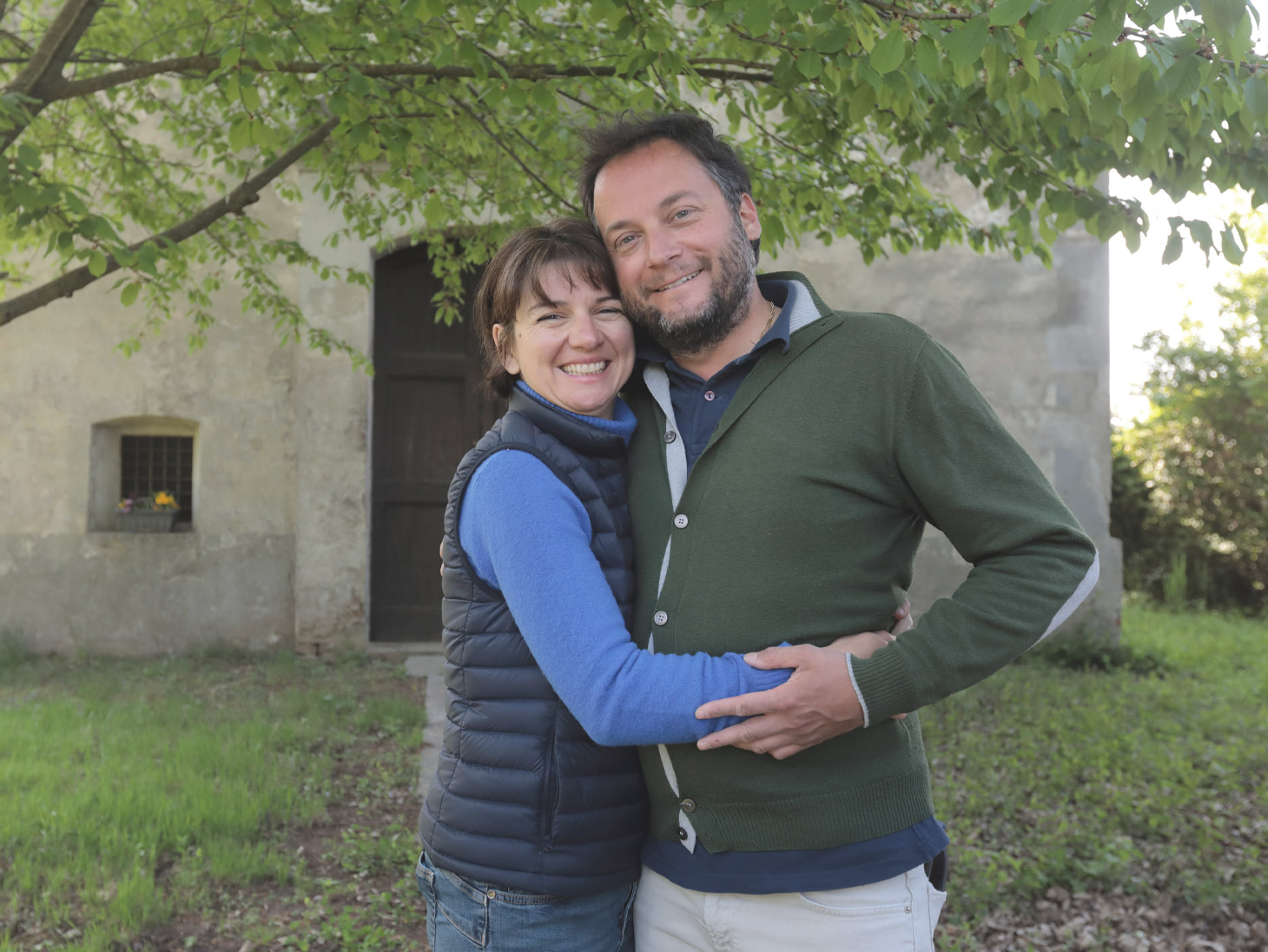
We have told you many times the story of Alice Cerutti, but it is worth retracing it briefly: a degree in Economics, a year in Brussels, a job first in Ferrero as a marketing manager and then in New York. The weekends in the family farm in Vercelli area, where she really feels at home.
And so, when in 2008 her mother wants to sell her estate, Alice decides to leave her career and return to Italy to take over the family farm. She enrolls in an evening course at the Agricultural Institute of Vercelli, learns to sow rice, to drive the tractor, to work the land, to cultivate rice, to be first respected and then esteemed by his neighbors, long-time farmers, despite being young, inexperienced and woman.
In this challange - perhaps crazy, but certainly brave - Simone follows her: at the time he was her boyfriend, now her husband. Simone is an environmental chemist, passionate about history. As a chemist, Simone has a fundamental role in helping Alice in the choice of cultivation techniques, for example to reduce the use of fertilizers and pesticides; as a history-lover he followed the renovation of the farmhouse trying to respect the architecture of the past: the dryer and the silos have been harmoniously inserted inside the farmhouse while the draft horse stable has been converted for the storage of tractors and agricultural equipment.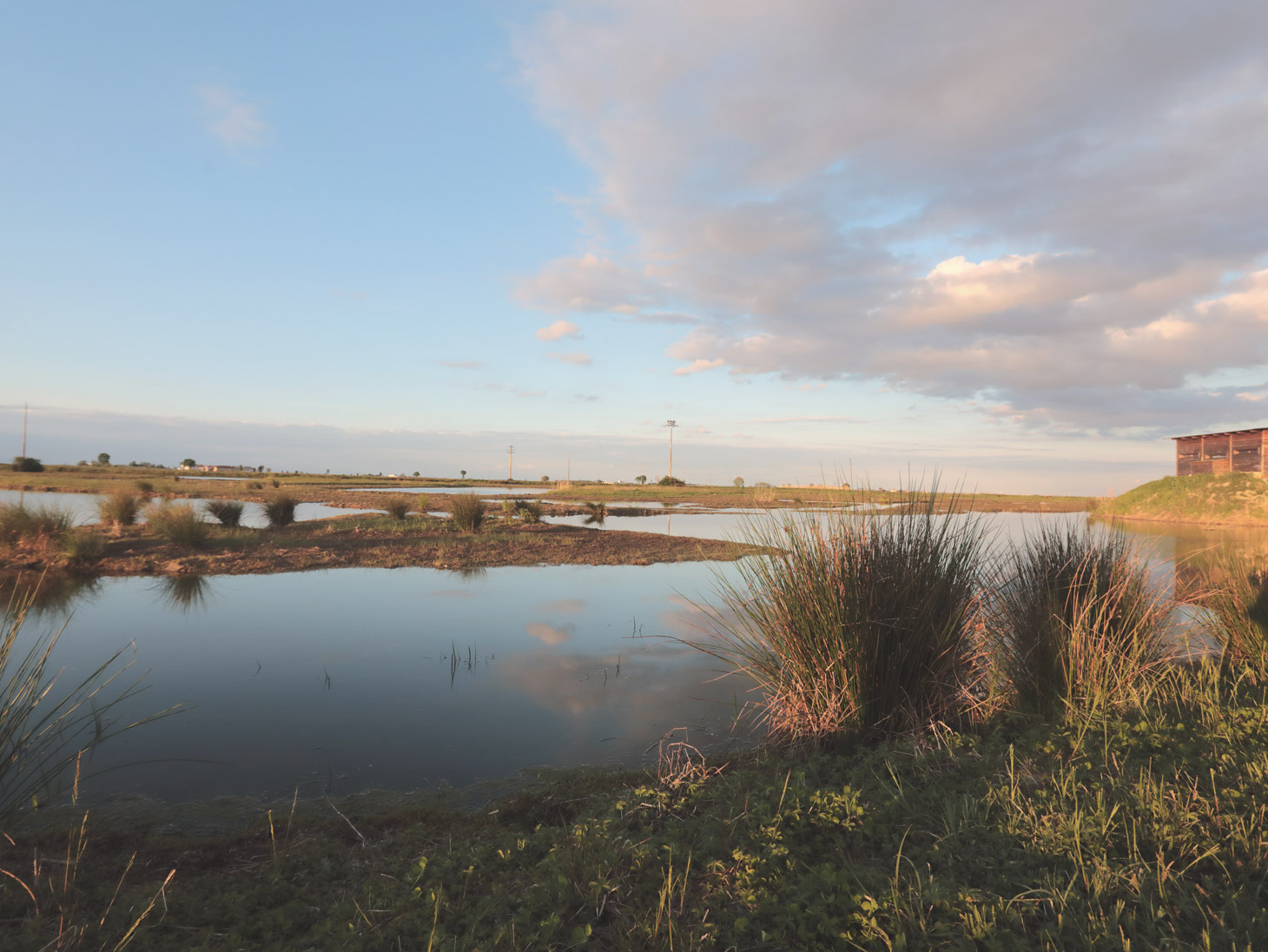
"The old buildings, carefully restored, are an archive of memory: the housings of the mondine - seasonal rice paddy female workers of the last century - the school for the children, the stable, the tavern, the shop and the rural church. Cascina Oschiena is one of the anciest farm of the region: the current structures date back to the end of the 16th century, although the first document that mentions it is a Consegnatum from 1202, when it was owned by the Marquisate of Monferrato and was given in concession to the Abbey of Santo Stefano di Vercelli "- he says Simone.
To see the submersion of the rice fields during sowing, between the end of April and the beginning of May, the only date we manage to fit with Beatrice, the photographer, is the weekend of April 25, bank holiday in Italy: I decide to take with me my daughters, two pre-adolescents, very happy - absolutely! - to participate to a work trip with their mother! 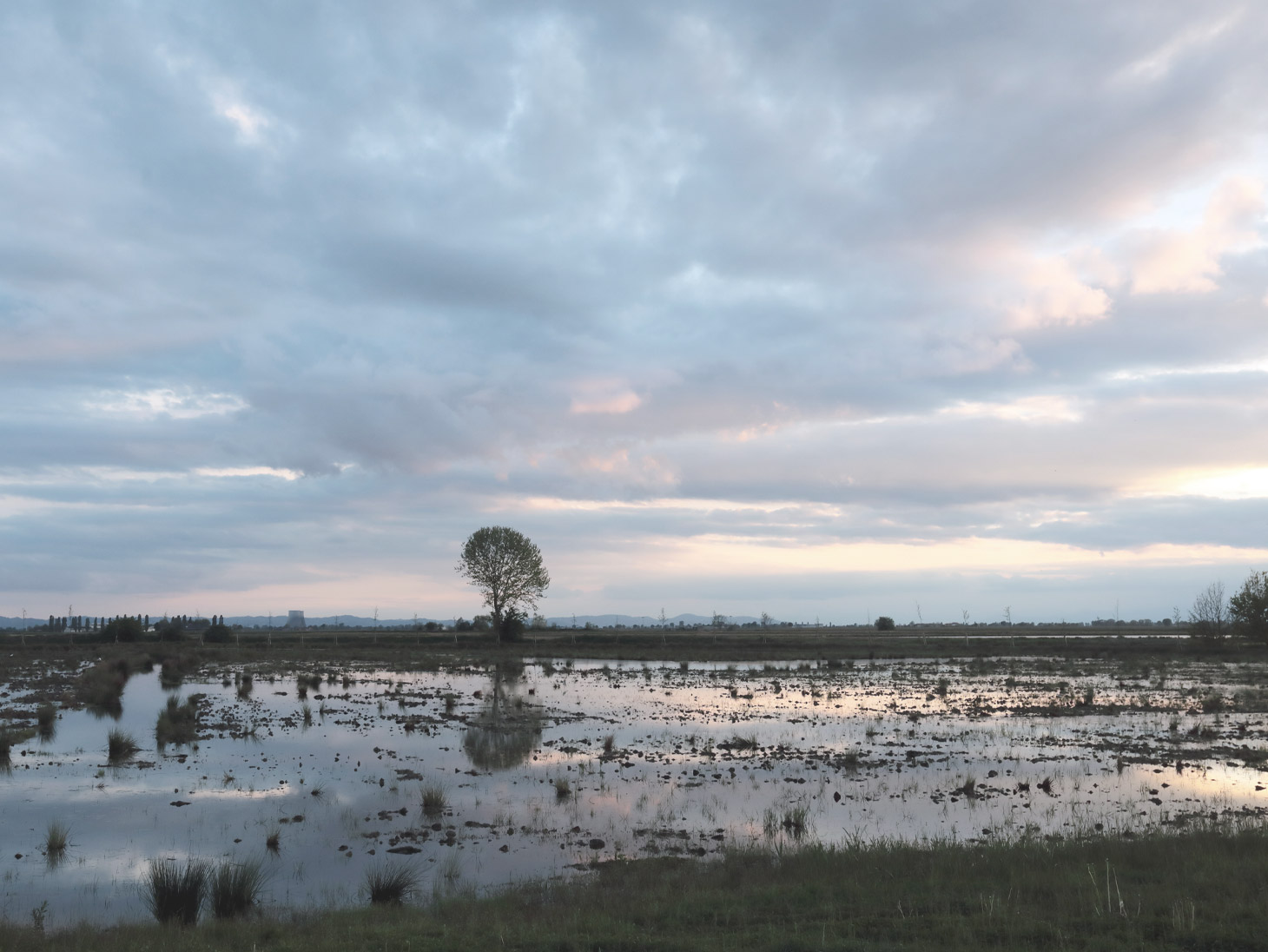
We arrive at the farmhouse at sunset. Alice and Simone welcome us together with Mario, their child who has just turned 4 years old. We decide to take a walk in the oasis immediately: with the light of the golden hour it is a sight that we cannot miss.
And here our weekend has a turning point: we meet Grisù, Alice and Simone's "domestic horse", a white draft horse that weighs almost 900 kg but thinks he's a dog. Grisù was destined for slaughter but was adopted by Alice and now lives in the oasis. He runs to meet us at a gallop - beautiful but terrifying - he approaches and cuddles us. My girls fall in love with him instantly, and pass from complaining to enthusiasm for this trip.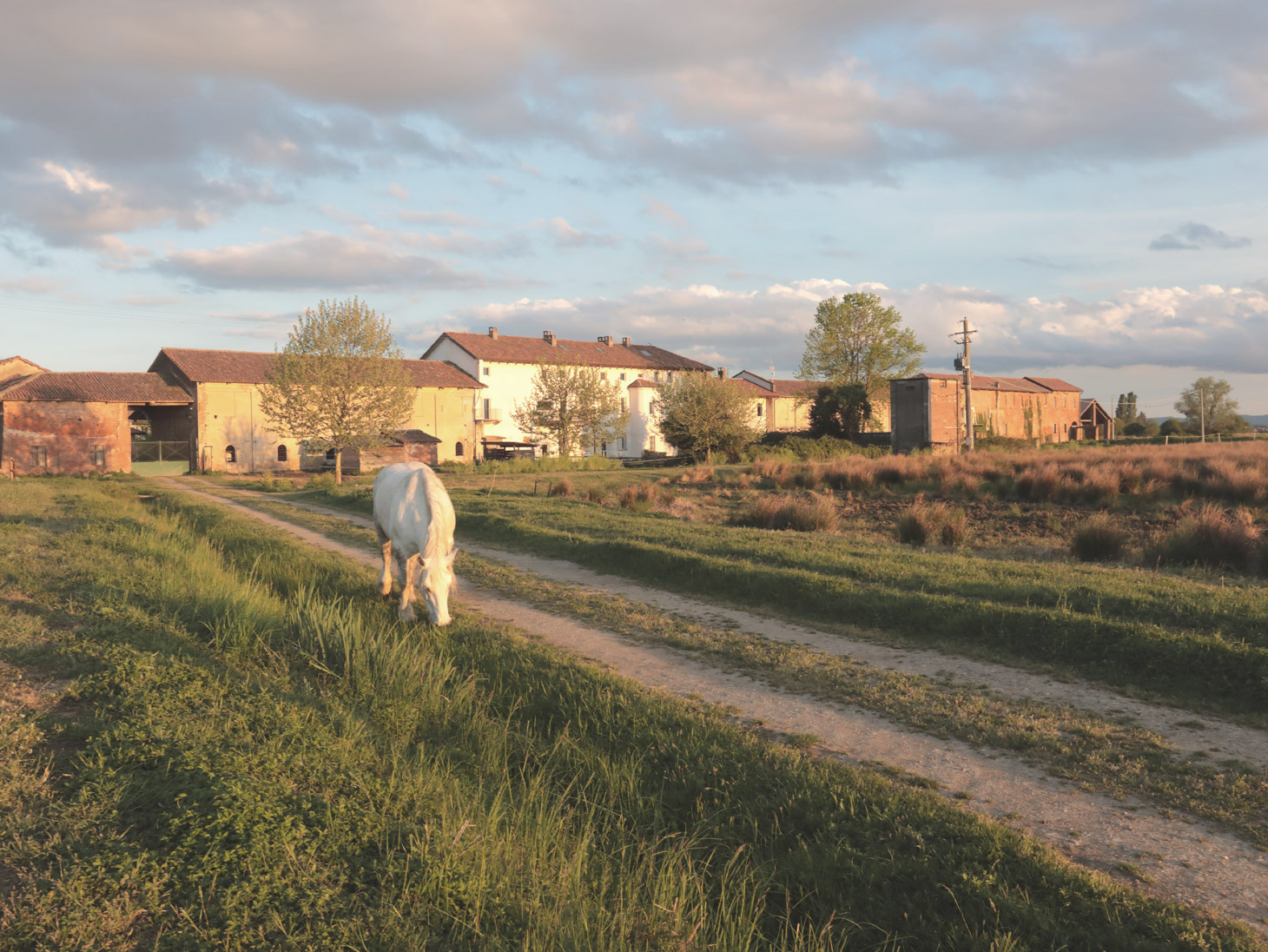
I close the gate that separates the farmhouse from the oasis and leave out the frenzy and the noise of every day: the oasis is a place of peace, the gaze is lost among the expanses of water and vegetation, the banks and the woods, clouds and birds, in a moment of reconciliation with nature and with oneself.
"The farmhouse extends over 109 hectares. 25 hectares were converted to oases in 2018; the Natural Oasis of the Godwit is one of the largest private wetlands in Europe created through the conversion of agricultural areas; if we add the 6, 5 hectares of wood we can say that today about 30% of the company's surface has been returned to the environment and dedicated to biodiversity, while 70% to rice cultivation".
In the oasis different environments of shallow water and meadows, reeds and rushes have been reconstructed, for the nesting of the Black-tailed Godwit. Its protection is the first objective of the Oasis, but also other species of birds are increasingly at risk due to processing techniques of intensive rice cultivation, e.g. the Cavaliere d'Italia and the Lapwing: the population of Cavaliere d'Italia has descreased of -82% in the last 10 years due to dry cultivation, truly impressive numbers! The results of the first years in terms of biodiversity have been extraordinary. Arpa Piemonte, the Po Park, the University of Turin and Eastern Piedmont carry out constant studies and monitoring on soil, botany, herpetology, entomology, avifauna. The restocking of butterflies, dragonflies and birds was truly exceptional.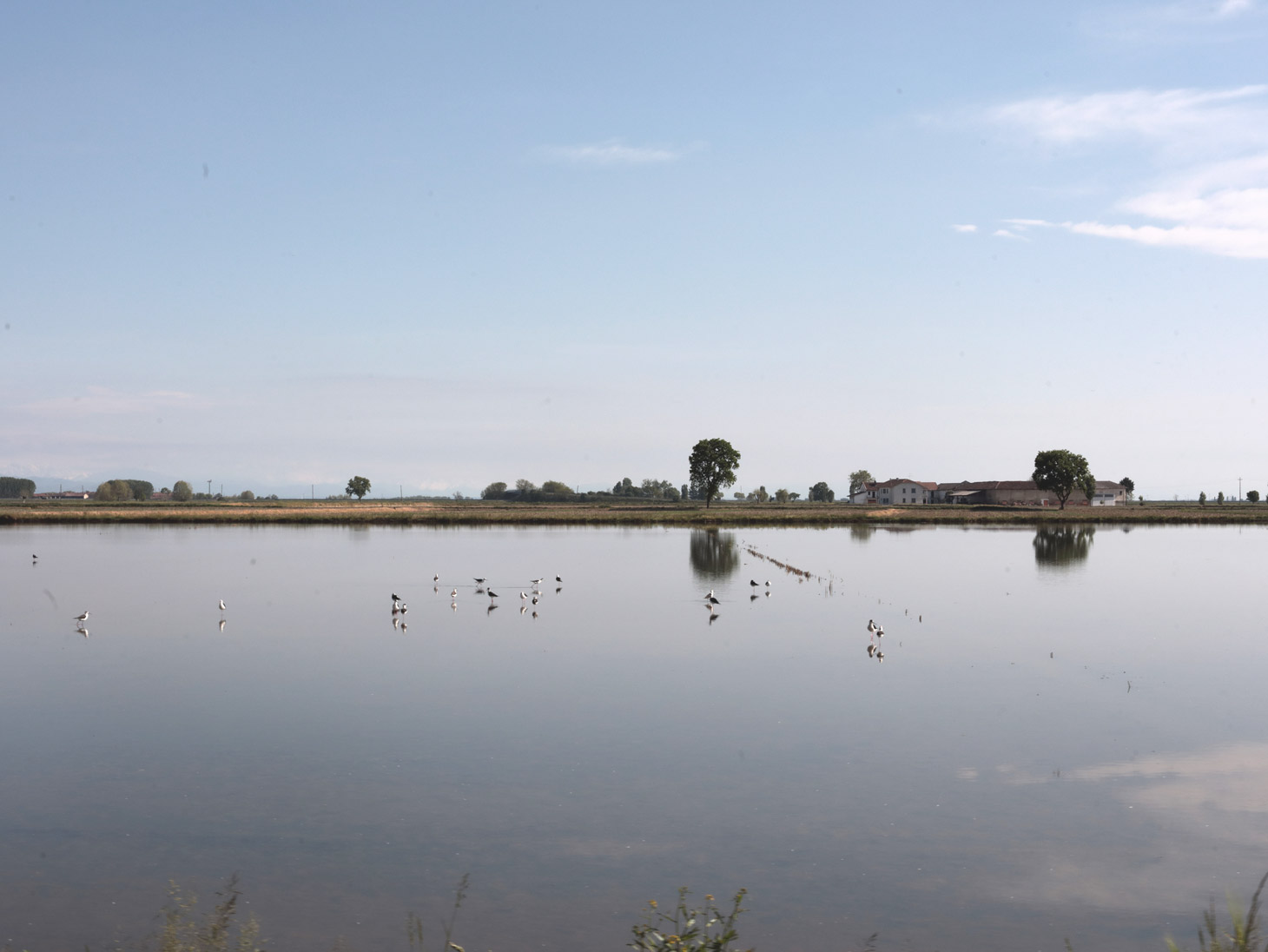
Also with regard to the area dedicated to rice cultivation, the goal was to pursue a sustainable agriculture, creating a cultivation system that could combine modern production with environmental protection: integrated production techniques to reduce the ''use of fertilizers and pesticides", construction of over 10 km of ditches in the paddy field to ensure watered areas all year round, maintenance of flooded rice fields, especially in spring, to facilitate the settlements and nesting of migratory poultry species.
In winter the sowing of green manure crops is also implemented, that is the sowing of plant species that allow to naturally enrich the fertility of the soil. The use of minimum tillage equipment, which does not involve turning the earth, also significantly reduces the consumption of diesel fuel compared to other practices, such as plowing.
Sowing is carried out in late April-early May, depending on the variety, using the traditional technique, i.e. in flooded paddy fields. The submersion of the rice fields between March and April is a historical and virtuous technique that allows at the same time both to optimize the water resource, even returning water to the environment, and to create submerged areas fundamental as a stop over of spring and more migratory flows and in general for the increase of biodiversity, since water is life! 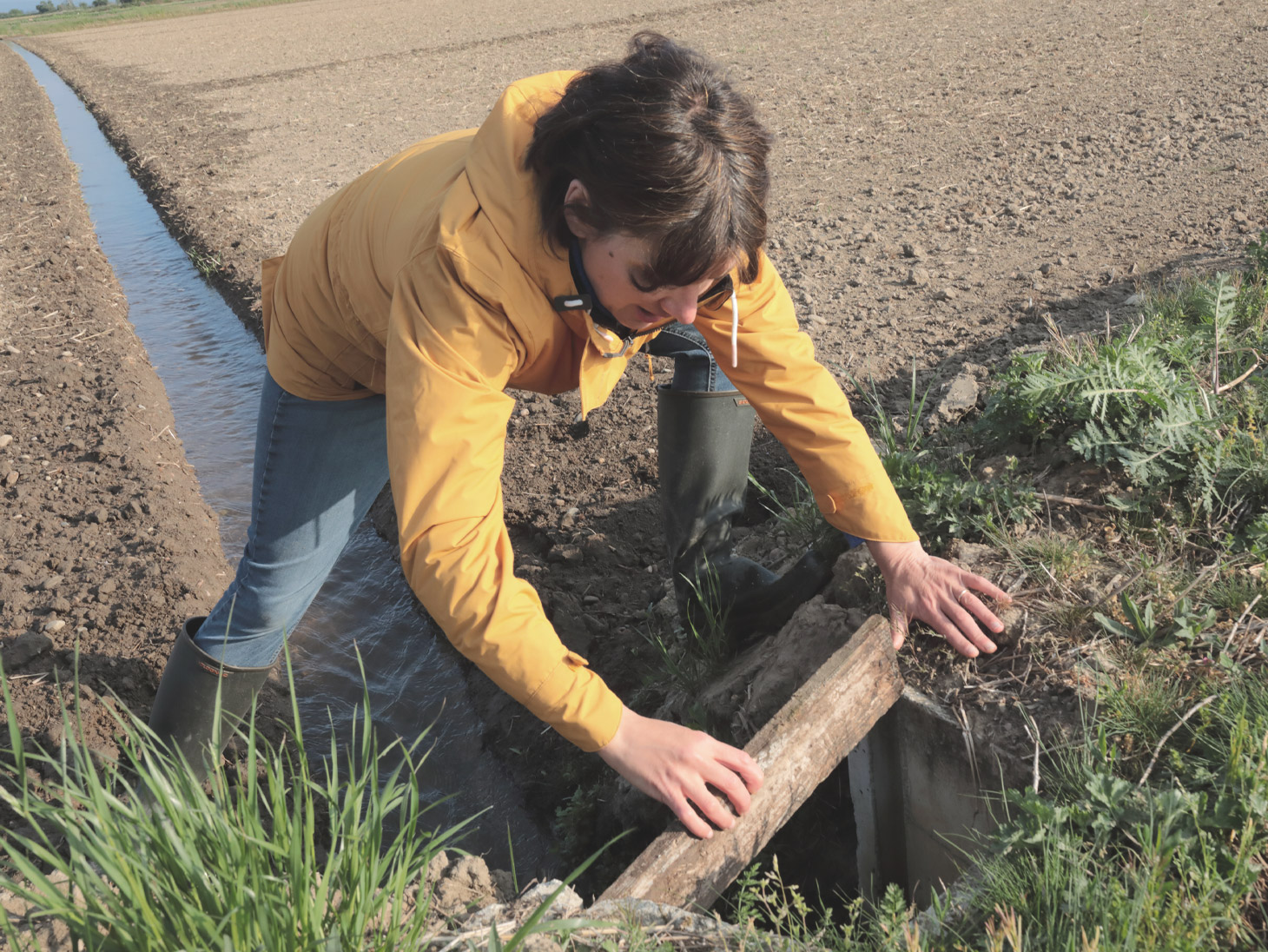
Dry sowing is easier because submersion is postponed for more than two months, thus reducing the workforce, as well as it allows the usage of some pesticides that are not allowed in traditional water sowing. "Over time, it has been difficult to find collaborators who shared our working method, unfortunately today the "normality" consists in a conventional agriculture increasingly far from our standards."
We have dinner together and Simone invited also Andrea, a guy, son of a doctor, who at the age of 14 chose to be a shepherd. For a couple of years, in his transhumance from Gressoney to the plain, he has been spending about a month in the Oschiena Estate. "The sheep eat the green manures and provide a natural fertiliser to the rice fields, it is a synergistic exchange for both".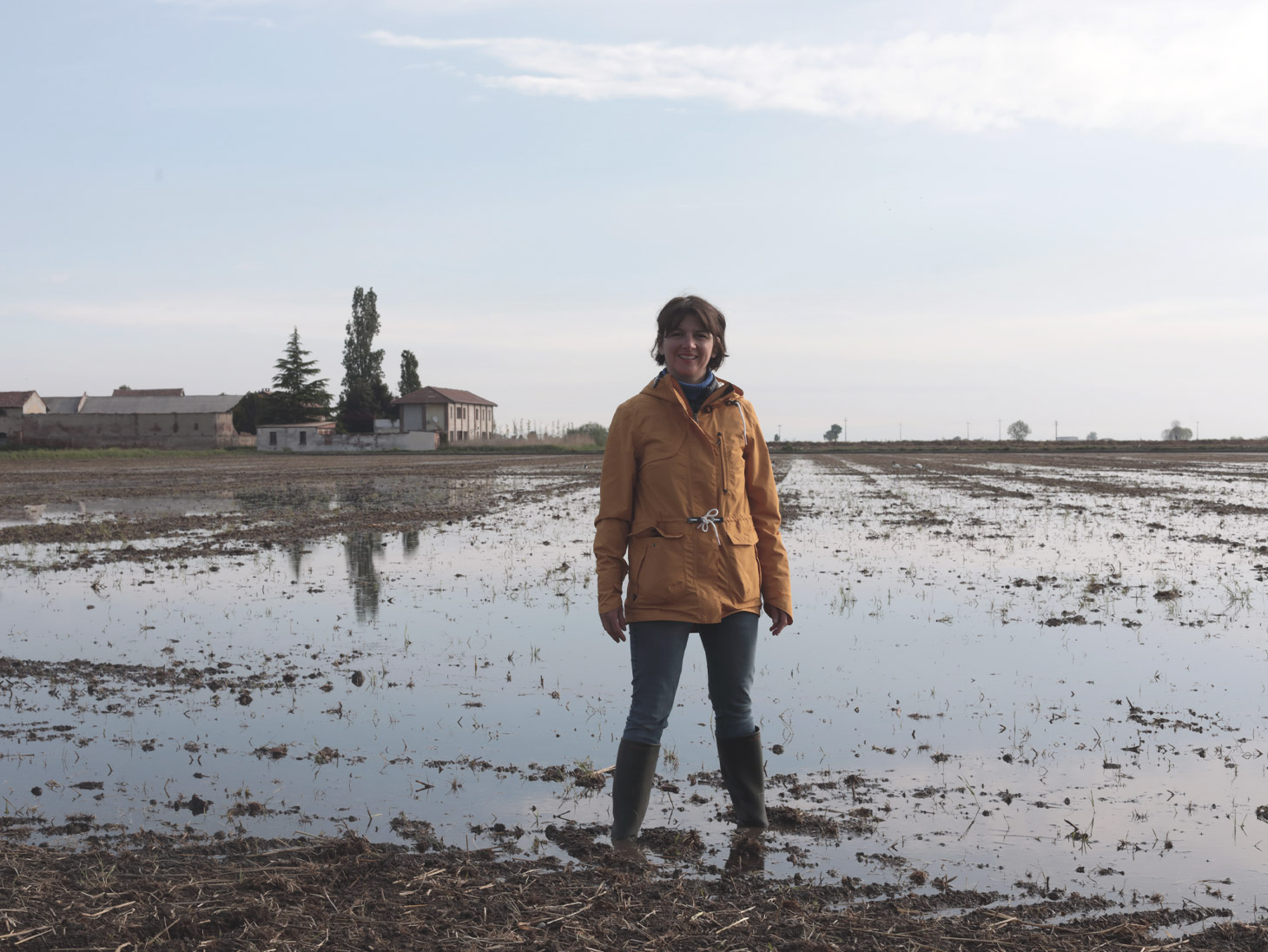
The next morning we go out early to visit the rice fields. We walk on the banks, we reach the church and the wood. Among the branches of the trees there are many nests, the call of the birds is so strong that we have to raise our voice to hear ourselves. We learn how the "soglini" work, what the fountains are and how the rice fields work.
"Water management was the hardest thing I had to learn. Our farm is rich in water, thanks to the exclusive use of fountains and outlets. Water is managed by gravity. Each paddy field is made up of different chambers, connected to each other by a network of channels and sluices that allow the water to flow by falling from one chamber to another and gradually submerge the fields. The chambers have a slight slope that allows the water to flow out from one field to another simply by opening or closing the locks with the so-called "soglini", wooden planks that interrupt or regulate the flow of water. In the rice fields the water is alive, keeps moving, and the level must always be checked according to how hot it is, how much the ground "drinks", how high is the water table".
Just looking at the banks you can guess where the Oschiena Estate ends: green with luxuriant vegetation the ones, yellow and dry because of the weeding the others.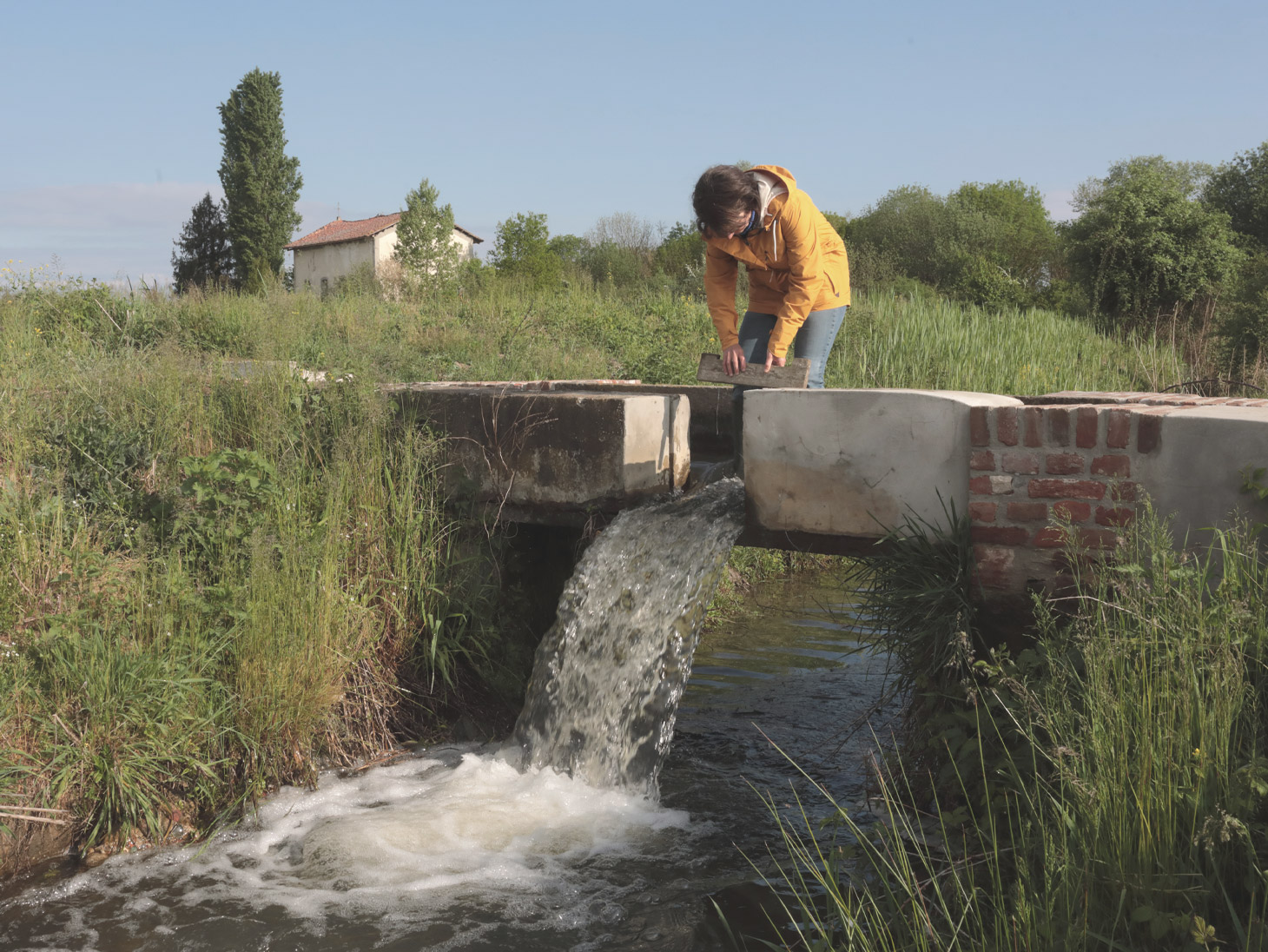
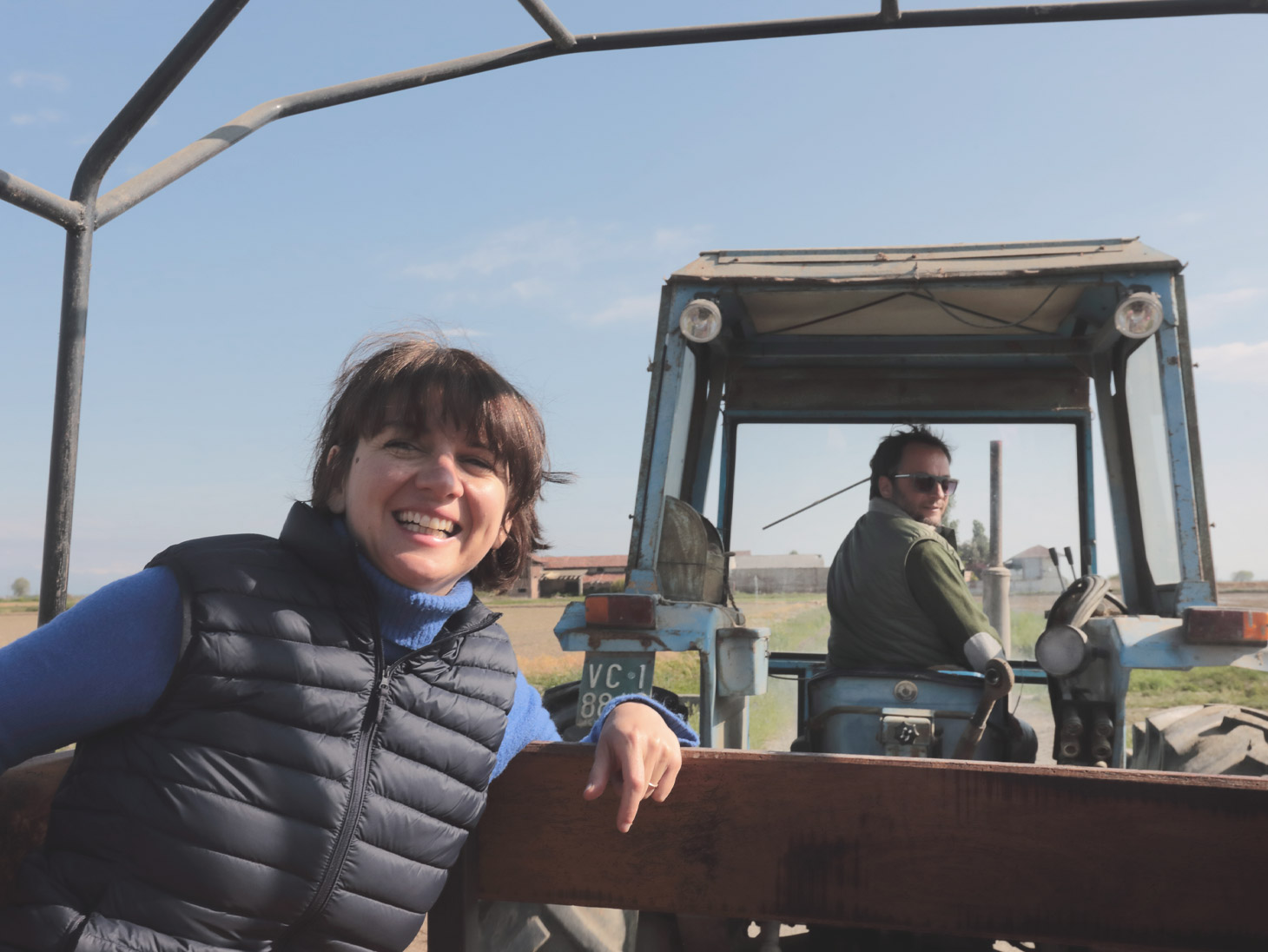
Simone pick us up at the church with a tractor with a trailer with benches. Also Mauro Della Toffola, an ornithologist who has been collaborating with Cascina Oschiena for years, joined us for a guided tour of the rice fields, where we try to recognize the different species of birds - over 35 different species - and also to imitate the sound of the Godwit.
"In these days we are sowing Carnaroli, then we will continue with the other varieties: Apollo, Ermes, Selenio, Arborio. And there is also a news, in the coming weeks we will sow a new variety of black rice, Ebano".
But this is another story, we will to tell you in fall, when it will be ready to taste!
Martina Iseppon
Marketing Director




